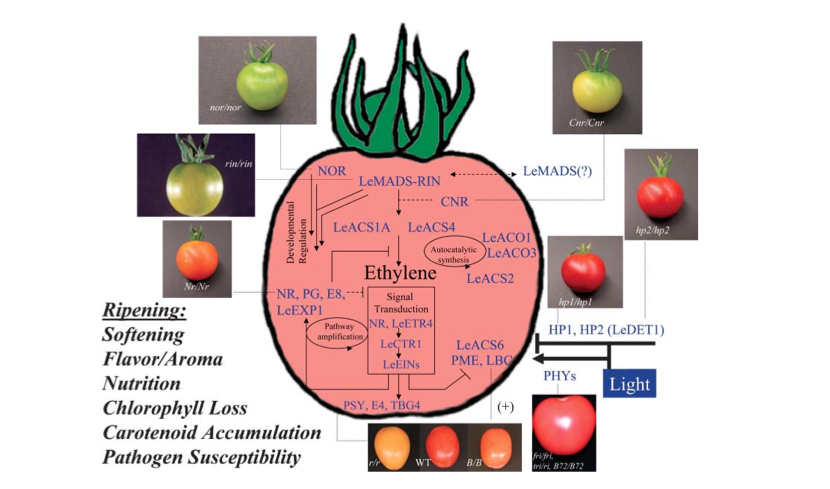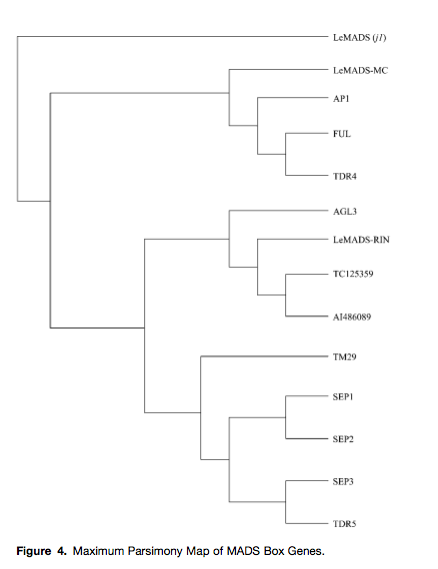Time of fruit ripening
Fruit is classified on a physiological basis as climacteric (presence) or nonclimateric (absence) of increased respiration and synthesis from ethylene (Giovannoni 2004). Blueberries like strawberries and grapes are nonclimacteric fruit and capable of ripening in the absence of increased ethylene synthesis. The distinctions between climacteric and nonclimacteric are poorly understood. It is suggested that nonclimacteric phenotypes may represent mutations in ethylene synthesis, but both types have common regulatory mechanisms. Therefore, I will look at gene involved in ripening for both climateric and nonclimacteric fruit in hopes to piece together genes in blueberry involved in time of fruit ripening.
Tomato:
The tomato is a model system for climateric fruit.
The rate limiting step in ethylene synthesis is the conversion of S-adenosylmethionine to 1-amino-cyclopropane-1carboxylic acid (ACC) via ACS synthases. ACS genes LeACS1A, LeACS4, LeACS2 and LeACS6 are under developmental control and are responsible for the initiation of ripening ethylene. Both are induced at the onset of ripening, and this induction is impaired by mutation at the ripening-inhibitor (rin) locus (Barry et al., 2000). Fruit homozygous for the rin mutation fail to exhibit ripening associated with ethylene production. Therefore, these genes would be good genes to look into.

On rin locus there are family genes called the MAS box genes which regulate timing of ethylene synthesis. These same genes were found in strawberry suggesting that a conserved function of MADs box proteins in regulating ripening. LeMADS-MC, which is expressed in immature and ripe fruit and TDR4, TDR6, TAG1, TC125359/TM29, TC117868, and TC124330) are thus candidates for genes encoding MADS box proteins that may interact with LeMADS-RIN. In addition, TAG1 and SEP29 have been repressed in transgenic tomatoes.

Strawberry:
Is the most widely studied nonclimacteric ripening fruit
The GAST-like genes are known to play a role in fruit ripening. GAST-like gene, FaGAST1 and FaGAST2 from strawberry shows an increases in throughout fruit receptacle development and ripening. related to the fruit size during development. Both are needed to work together for fruit cell size during fruit ripening and therefore, could be candidates for search in the blueberry (Moyano-Canete et al. 2012).